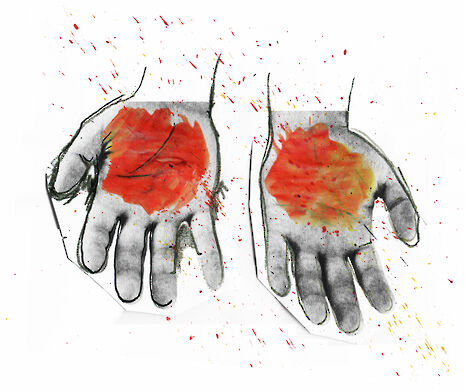The Art of Crime
Who would have thought it? Art can be the fuel behind terrorism and gang crime. If you think nowadays artists can get away with anything, it seems art’s thieves can too. But it’s not about the art, Dan Hitchens finds out, it’s about the money.

Art thieves are supposed to be amateurs, chancers or connoisseurs, or even better, all three and a millionaire. Rene Russo’s character insists in The Thomas Crown Affair: ‘This is an elegant crime, done by an elegant person. It's not about the money.’ But the amateur art thief is on the way out. His replacement is a much less attractive figure – the international gangster.
“There is very little romance about it,” says Hugo Penning, Head of Security at Oxford’s Ashmolean Museum. “The public always seems to think that these works of art are stolen to furnish somebody’s yacht because they can’t live without a Cézanne. It’s highly unlikely. Famous works of art get stolen by criminal gangs.” The US Department of Justice lists art crime as (this might surprise you) the world’s third biggest illicit trade, after drugs and arms.
The classic amateur theft was in 1961, when a pensioner called Kempton Bunton struggling to pay his licence fee was angry at the expense of taxpayers’ money on Goya’s portrait of the Duke of Wellington. So he broke in through the National Gallery’s bathroom window in the middle of the night and left with the Goya.
Security has got better, and the thieves have got more brutal. Big heists, such as the 2004 Munch theft in Oslo, now tend to happen at gunpoint in the daytime. Police will be close behind, so, Penning explains, “What we try to achieve in security is delay. Delay, delay, delay.”
According to Penning, “Security is winning,” but some disagree. The art critic David Lee claims that art theft is not difficult. I ask him whether there are any really incompetent art criminals. “Oh, they’re nearly all incompetent. It’s actually very easy to get away with art theft, it seems to me. Most art thieves are idiotic enough to want to cash in immediately. But if you wait long enough and the work is insured, the insurance company will be prepared to deal with you.”
Lee points to cases like the 2003 theft from the Whitworth Gallery in Manchester. The thieves – students playing a prank, Lee guesses – made off with a van Gogh, a Picasso and a Gauguin, then left them in a public toilet with a note pointing out how easy it was to steal from galleries.
“I have a roguish admiration for art thieves,” Lee confesses. As a frequent critic of the art establishment, he appreciates their mischief. “A lot of people like seeing the toffs in the art world exposed. Don’t we? Anything that gets at snooty academic authority is bound to be appealing to reprobates and renegades like me.”
The appeal of the art theft has something to do with the underdog triumphing. But the criminals look more and more like overdogs, given that art crime funds the illegal arms trade and terrorism. The American art critic Noah Charney, a graduate of John’s, explains: “Governments don’t understand the severity of art crime because it hasn’t been studied enough, and there isn’t enough empirical data and statistics to convince them.”
So in 2007, Charney founded the Association for Research into Crimes against Art (ARCA). His aim was to bring together the different disciplines which art crime touches. Academics are timid about going beyond their expertise, he says, while professionals with first-hand knowledge – curators, policemen, insurance agents – don’t have the time or training to do proper research.
ARCA publishes a journal on art crime, runs various outreach projects and academic gatherings, and offers a Master’s program. Are they having much success changing attitudes? “I don’t know how much credit we can take, but there’s been a change in how journalists frame art crime cases. Just a few years ago, when there was a big art theft, most journalists would ask, ‘Is some criminal mastermind in a Bavarian castle twirling his moustache, having just ordered this picture stolen?’” Now, Charney says, the press have grasped the seriousness of art crime.
Does Charney have any respect for the criminals? He has, after all, written a thriller, The Art Thief. On his homepage he appears in an enigmatic, Byronic pose. All the glamour of art crime helps his cause, doesn’t it? “Yeah, it does. But there are very few art criminals who upon close analysis would deserve admiration.”
 News / Cambridge cosies up to Reform UK30 November 2025
News / Cambridge cosies up to Reform UK30 November 2025 News / University Centre hangs in the balance28 November 2025
News / University Centre hangs in the balance28 November 2025 News / Jack Peters wins Union presidency in contested race1 December 2025
News / Jack Peters wins Union presidency in contested race1 December 2025 News / Protesters accuse sustainability institute of ‘greenwashing’1 December 2025
News / Protesters accuse sustainability institute of ‘greenwashing’1 December 2025 News / Uni registers controversial new women’s society28 November 2025
News / Uni registers controversial new women’s society28 November 2025









